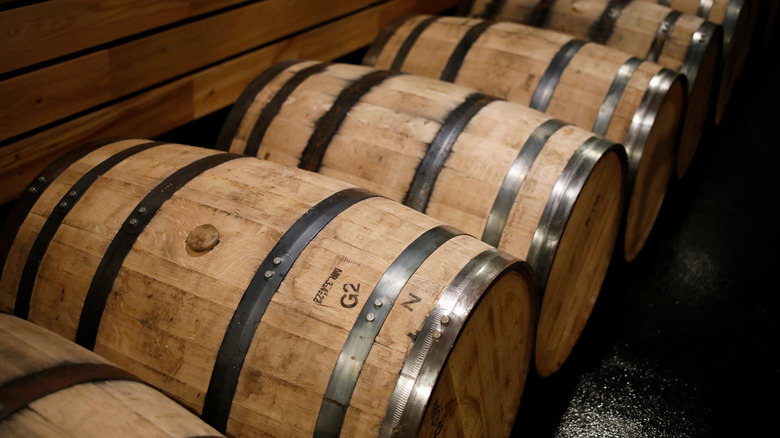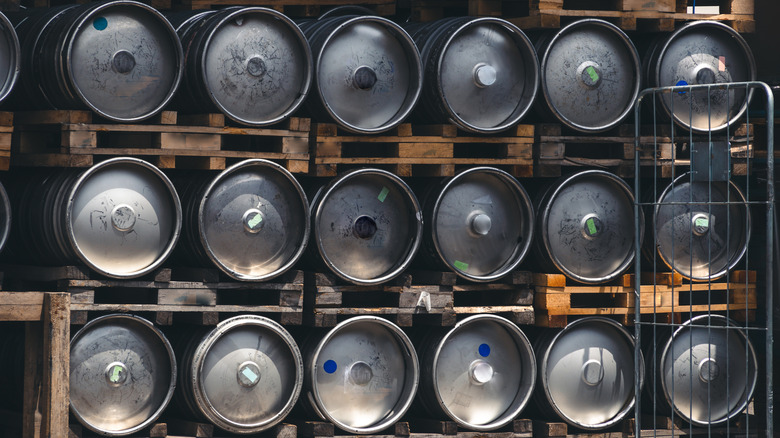Aging Bourbon For Too Long Has An Opposite Effect Than You'd Expect
For a long time, regular folks have used the age on the label to judge a bourbon's worth. The idea is straightforward: Just like wine, older bourbons should taste better. It doesn't help at all that some of the priciest bourbon bottles are indeed decades old, like a 25-year-old Rip Van Winkle, which can set you back a hefty $65,000. But the pros know it's not that simple. In fact, letting bourbon age for too long may actually harm its flavor!
The process of aging bourbon starts with what's known as "white dog," or, newly-distilled whiskey. White dog is clear and tastes very sharp. To refine its character, this white dog is placed in new charred oak barrels and left to mature for at least two years (four years for bottled-in-bond bourbons) in a cellar. With time, it gains a warm amber hue and a smoky, woody flavor. The oak also mellows the alcohol bite and unwanted flavors, resulting in a tastier, more complex profile.
But there's a limit. Most bourbons aren't aged over 15 years, as, beyond this point, too much wood influence can make it taste bitter, ashy, and sour. Over-aging can even dilute a bourbon's unique flavor and erase its signature notes and finishes. Obviously, this is unacceptable for distillers. To prevent this, they maintain strict maturing programs where they regularly sample each barrel twice a year. Once the bourbon in a barrel has reached the perfect age, it's promptly removed to halt further aging.
Where do bourbons go once they come of age?
When a barrel has been certified to have aged just right, it's "dumped" and the bourbon within is siphoned out and transferred into stainless steel barrels. Stainless steel, unlike oak, is a neutral material and won't interact with the bourbon. This means the liquor can remain in these vessels for as long as needed without aging a second older (flavor-wise). It's not a very well-known step in the bourbon production process, but it's a crucial one nevertheless!
While the bourbon is in these stainless steel barrels, distillers have several options. One course of action is simply leaving the barrels in the cellar until the perfect time to bottle the bourbon arrives, which is often the case when there's an abundance of bourbon being produced. To avoid flooding the market, distillers might set aside a portion of their yield and release it in a later batch.
Stainless steel barrels also come in handy for keeping older, well-aged bourbons safe until they're ready to be unveiled. A prime example is Buffalo Trace's 17-year-old Eagle Rare bourbon. They store it in stainless steel barrels to ensure that its quality remains top-notch until it's time for its special limited release every fall. And, when it's time to move this precious bourbon from the cellar to the bottling facility, stainless steel barrels are also the preferred choice to ensure it gets there safely!

